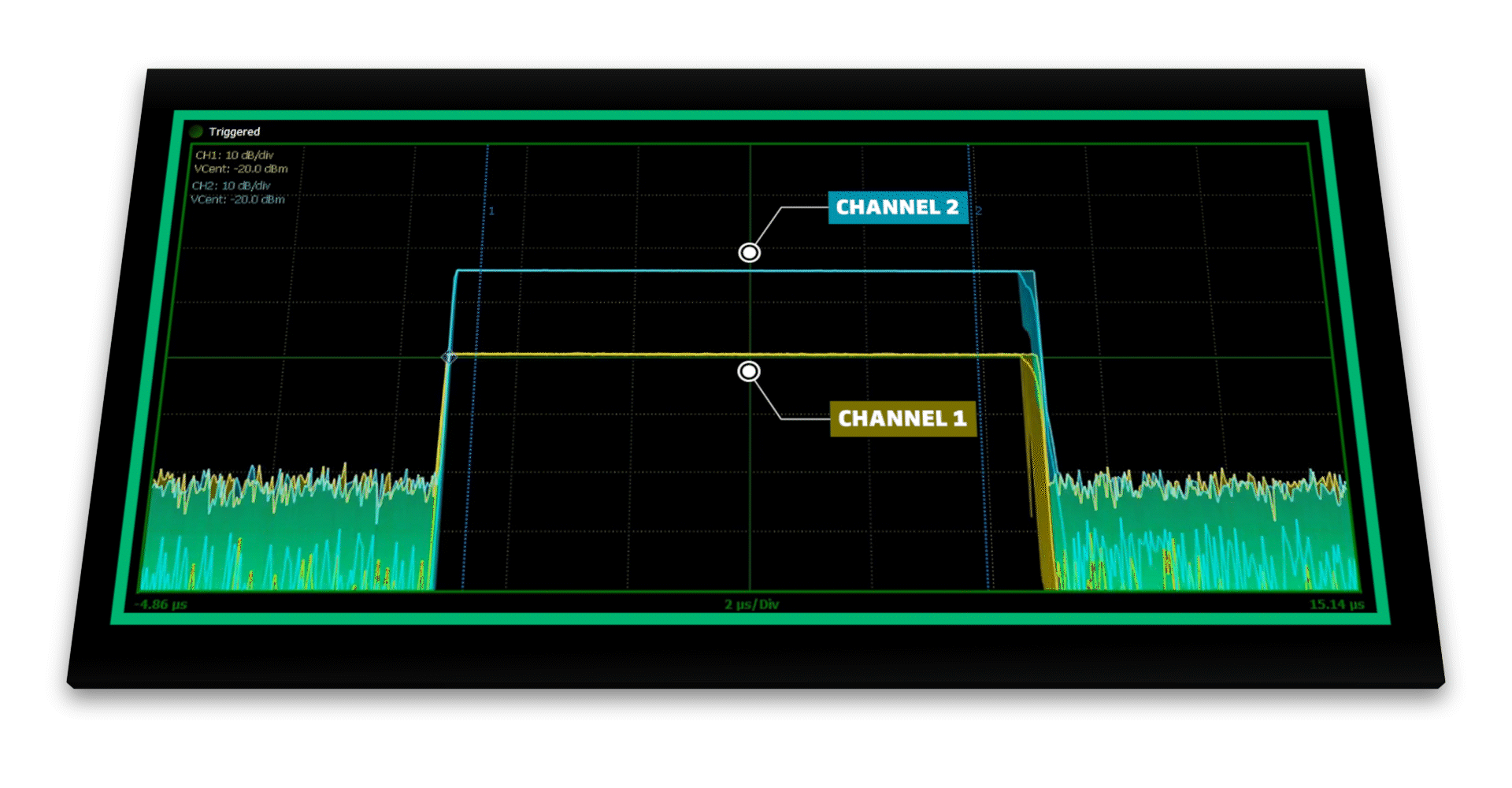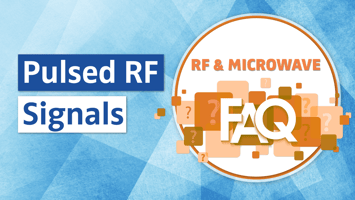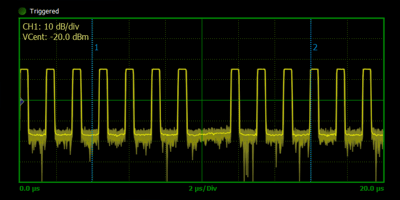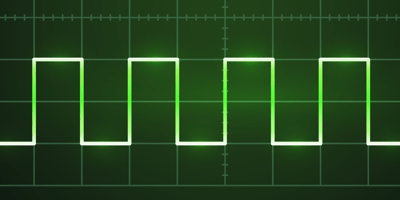Applications such as radar and communication systems rely on the control and manipulation of...
How Can You Test the Performance of a Pulsed Amplifier?
Systems that utilize and manipulate pulse-modulated RF signals present distinct test and measurement challenges. In this blog post, discover important sensor specifications for pulsed power measurements and how to characterize the performance of a pulsed amplifier.
Pulsed RF Amplifiers
An amplifier increases or amplifies the power of a signal, delivering a higher-power version of the signal received as an input. The trace view of a pulsed amplifier in the image below highlights this functionality, with the input and output signals on channel 1 and channel 2, respectively.
Pulsed amplifiers are built with specific optimizations to handle pulsed RF signals efficiently. These devices are widely used in applications that require precise control over pulse-modulated waveforms, such as certain communications systems and military/civilian radar.  Engineers test pulsed amplifiers regularly to catch and address performance issues, such as signal distortions, system nonlinearities, and errors in pulse shape and timing. Peak power sensors, whether connected to a PC or benchtop instrument, are often used to capture, measure, and display pulsed RF signals. A few advantages of using these devices for pulsed signal analysis include:
Engineers test pulsed amplifiers regularly to catch and address performance issues, such as signal distortions, system nonlinearities, and errors in pulse shape and timing. Peak power sensors, whether connected to a PC or benchtop instrument, are often used to capture, measure, and display pulsed RF signals. A few advantages of using these devices for pulsed signal analysis include:
- Rise time: A sensor must respond fast enough to track the leading and falling edges of pulsed waveforms. Peak power sensors can achieve fast rise times, which is the time interval for a signal’s leading edge to change or rise from 10% to 90% of the pulse magnitude, to capture pulse edges cleanly and accurately.
- Video bandwidth: Accurate tracking of a pulse’s envelope power relies on a sensor’s maximum video bandwidth (VBW). Engineers can obtain results with power measurement inaccuracies that distort the pulse shape if they use a sensor with a VBW that is too narrow for their application.
- Time resolution: Fine time resolution enables engineers to zoom into a pulsed waveform to observe its fine details. Analyzing a waveform at short, targeted time intervals can verify characteristics of the pulse shape, offer precise information on timing, and distinguish between pulses with narrow spacing.
- Triggering capabilities: Peak power sensors commonly offer triggering capabilities for a high level of measurement control. Users can define certain conditions or events to start the measurement process as well as synchronize the response of the sensor.
How to Characterize a Pulsed Amplifier
Watch the video, “How to Characterize a Pulsed Amplifier with Boonton Peak Power Sensors,” for a demonstration on how to analyze pulsed amplifier performance with the RTP5000 Series Real-time USB Peak Power Sensors and Boonton Power Analyzer software.
Along with highlighting several capabilities of the RTP5000 Series for detailed pulsed analysis, various software features are used during testing, such as:
User-defined markers: Users can freely position two measurement markers to target analysis on a specific pulse region.
Automatic measurements: Two customizable measurement tables provide a wide range of automated measurements that are extremely useful when characterizing or troubleshooting pulsed amplifiers.
- The “Automatic Measurements” table lists up to 16 pulse parameters, including rise time, fall time, pulse repetition frequency, duty cycle, off-time, waveform average power, pulse average on power, pulse peak power, overshoot, pulse droop, IEEE pulse top amplitude, IEEE pulse bottom amplitude, edge delay, and channel-to-channel skew.
- The “Marker Measurements” table lists measurements related to each user-defined marker as well as over the marker interval. Measurements include average power, maximum and minimum instantaneous power, and peak-to-average power ratio.
Available Now: "Measuring RF & Microwave Power" eBook
Among its various sections, the “Measuring RF & Microwave Power” eBook from Boonton features test parameters and solutions for measurement of pulse-modulated RF signals. Download the form today to access this comprehensive resource that highlights power measurement essentials for pulsed RF applications.




